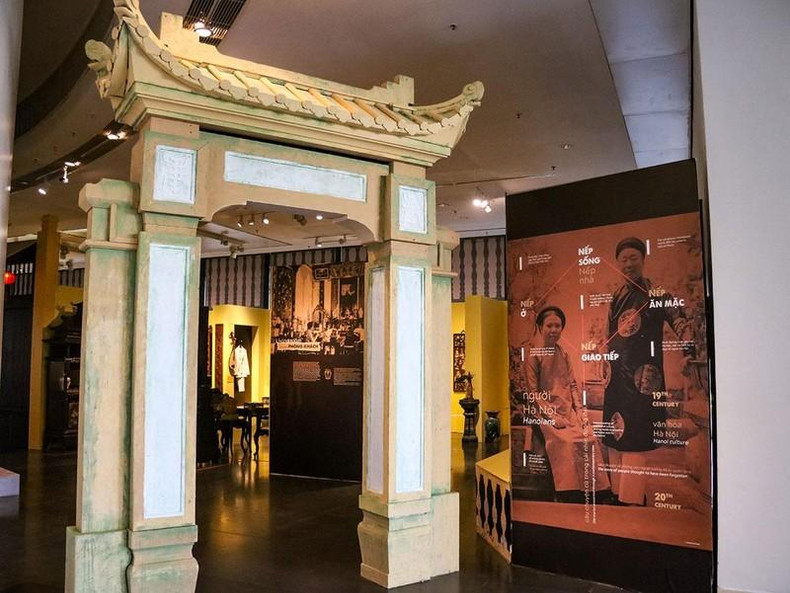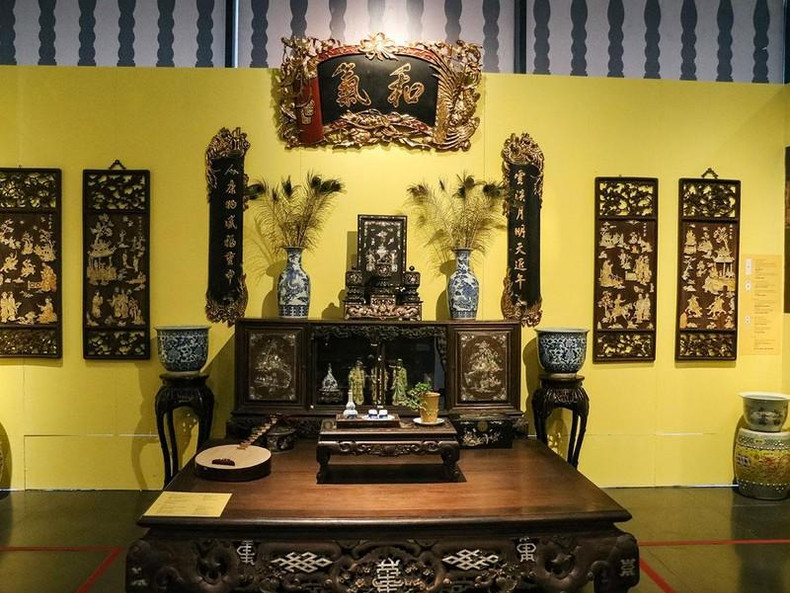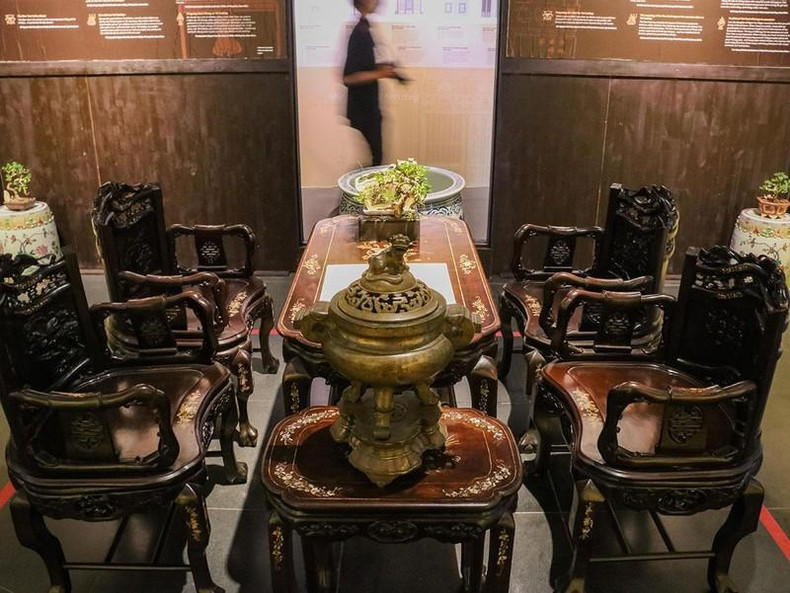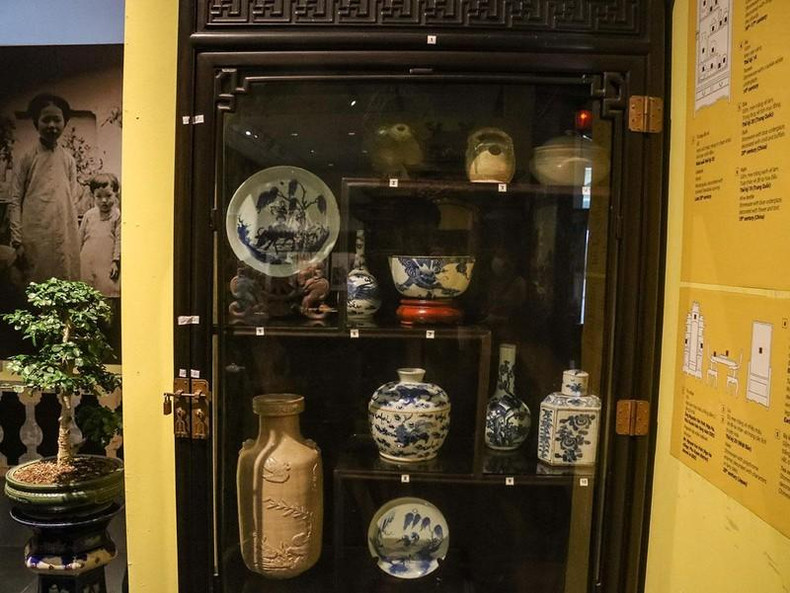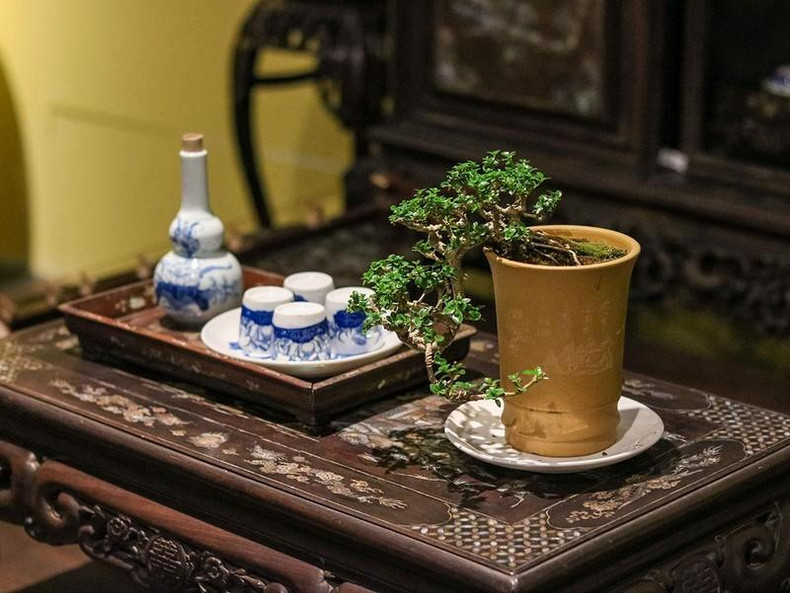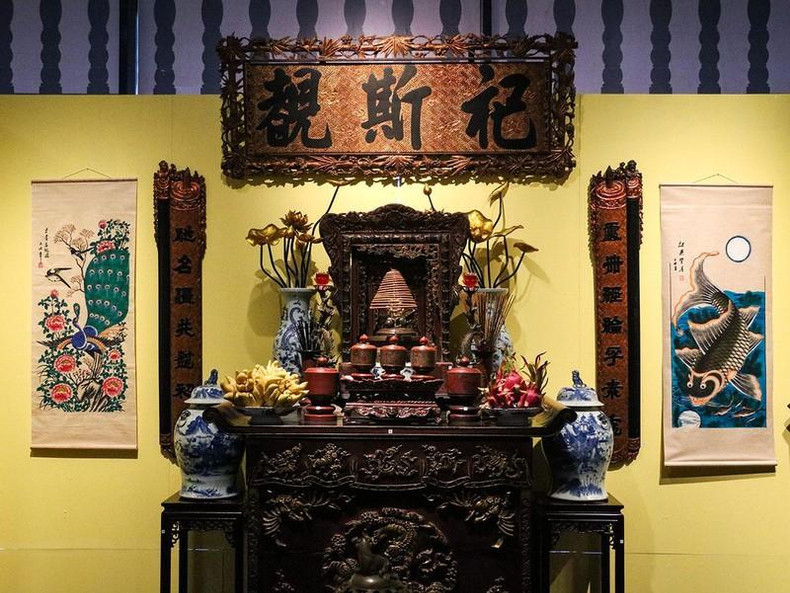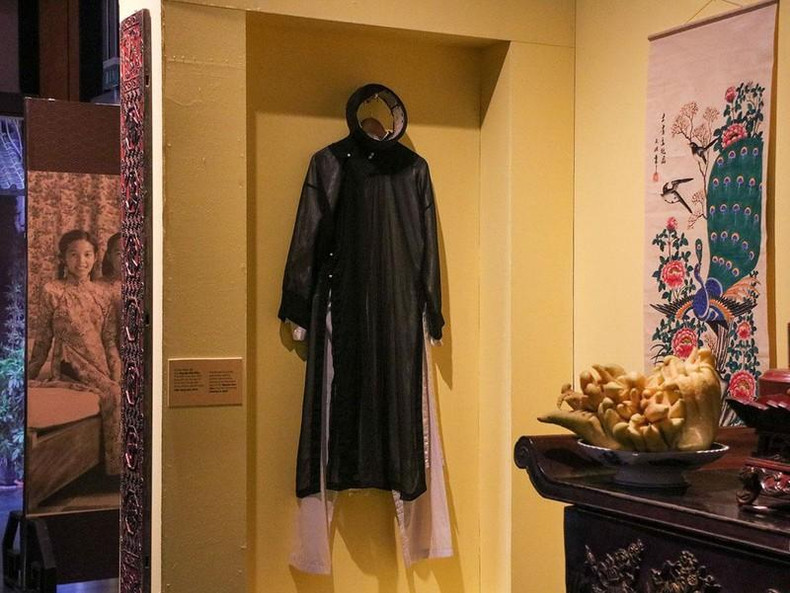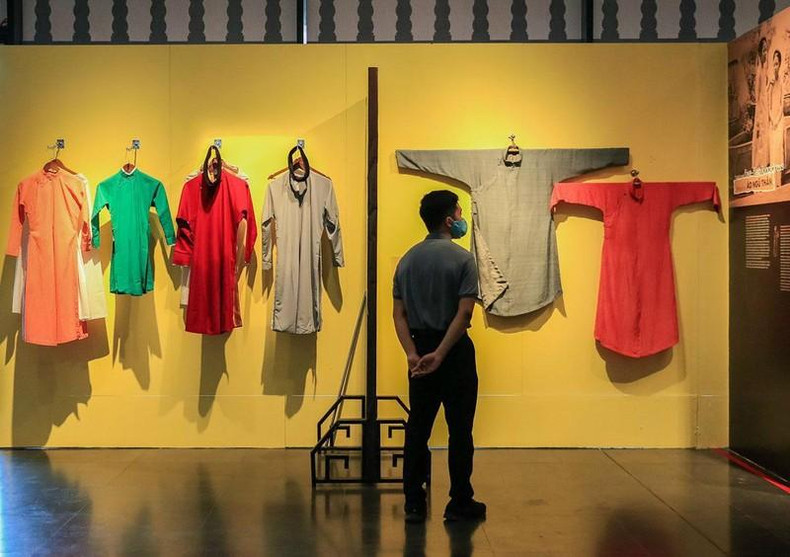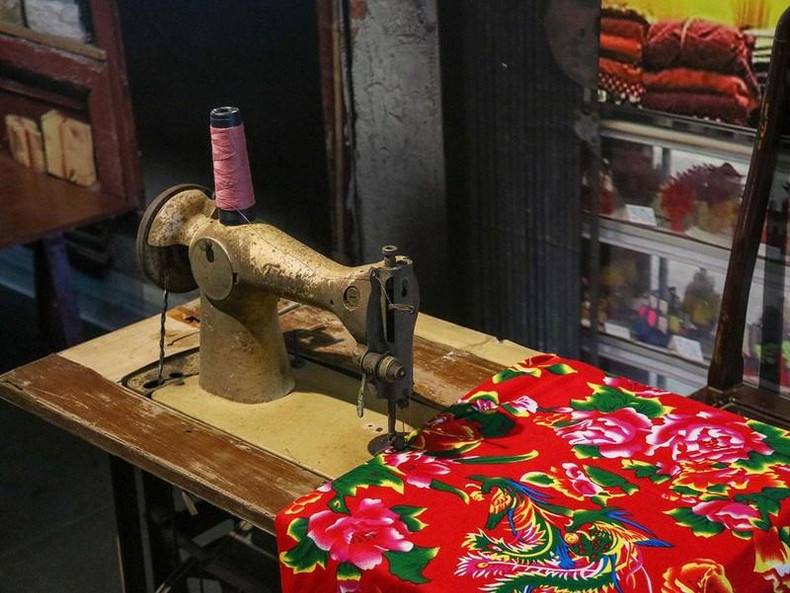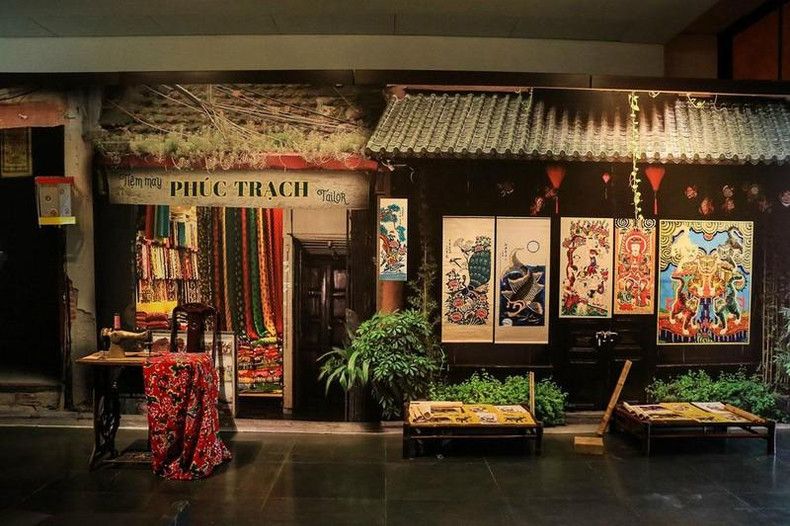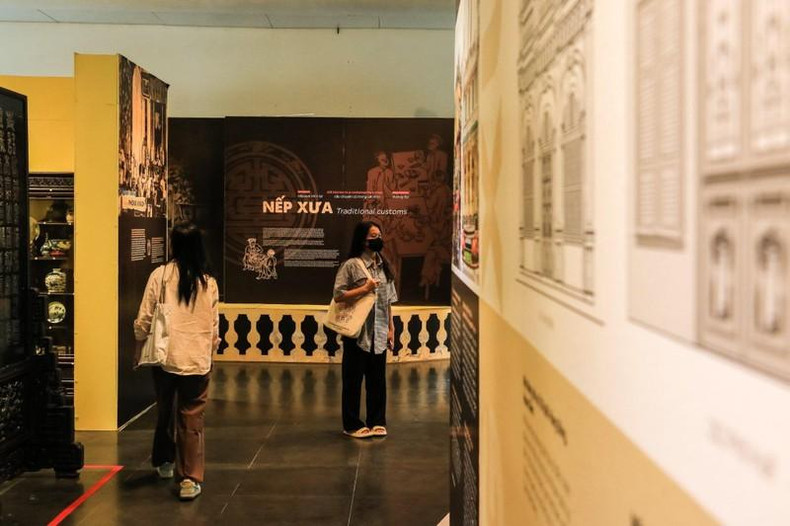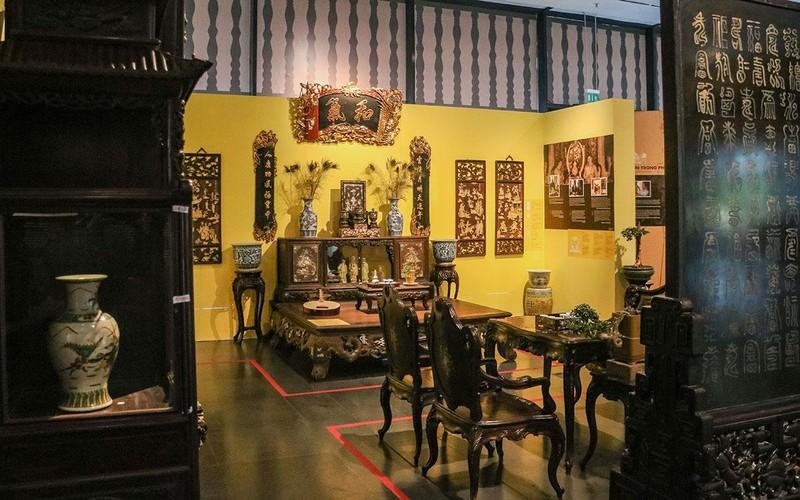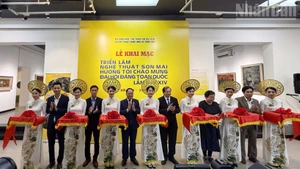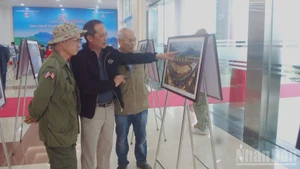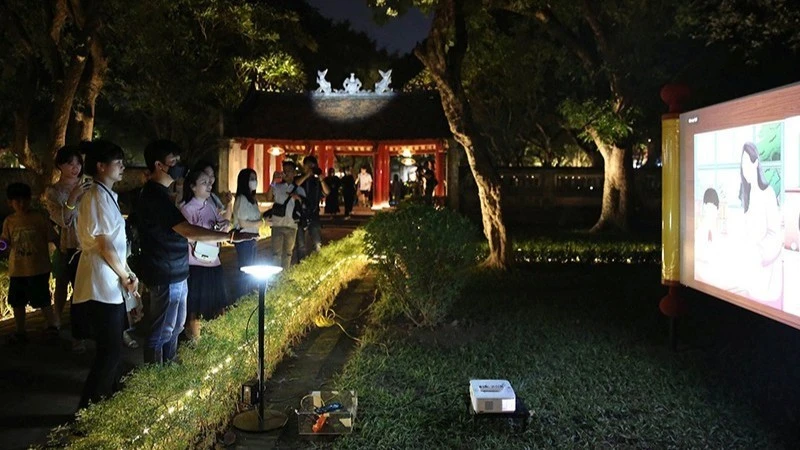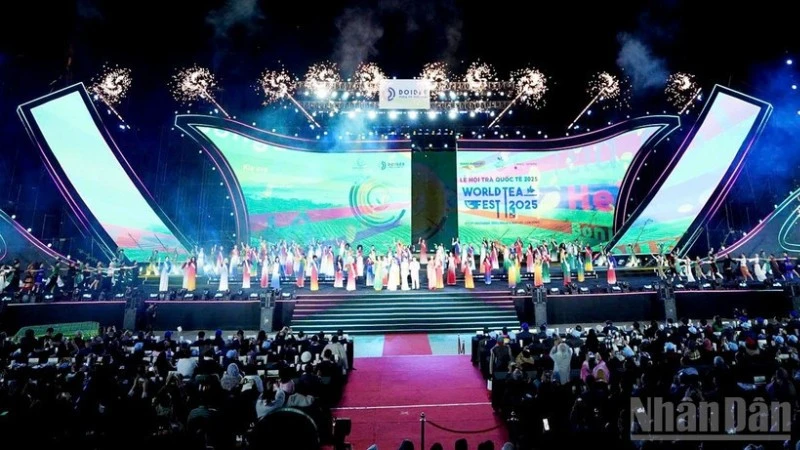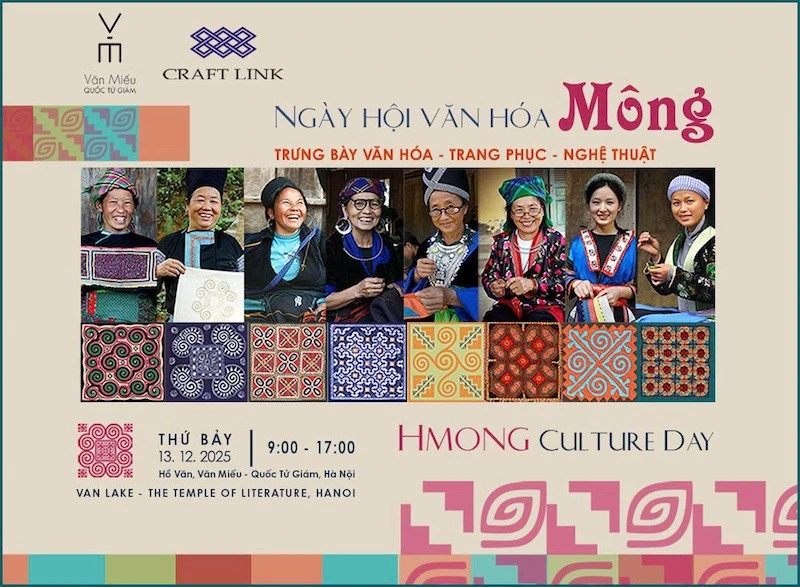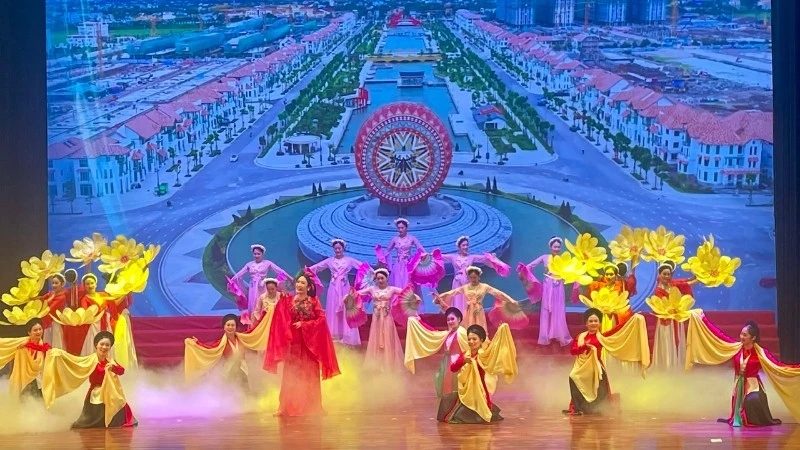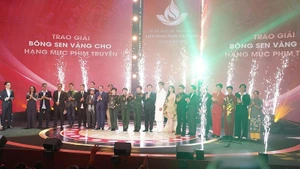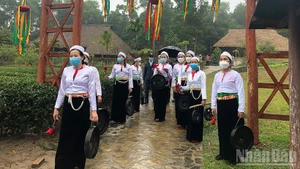 |
| The entrance to the exhibition area was designed like a familiar village gate, accompanied by an infographic introducing the lifestyles of Hanoians in the past. |
 |
| The main space is a typical living room of Hanoians in the early 20th century, with a large wood bed, tea table, casket and tray. They are all made of wood and inlaid with pearls. |
 |
| The dining table set was made of wood and carved delicately, highlighting the culture of the ancient Hanoi people. |
 |
| A cabinet containing many ancient artefacts of Hanoians in the early 20th century, such as lime vases, bowls and plates. |
 |
| The tea table was decorated with a set of wooden trays and porcelain cups and a tree that is artistically bent, bringing a sense of sophistication and elegance. |
 |
| The traditional altar space of Hanoians has been preserved and handed down. The altar is usually placed in a solemn place and in the centre of the house to worship gods, ancestors and the deceased. |
 |
| A five-flap long dress for men was preserved by Do Minh Thuong from Trach Xa commune, Ung Hoa district, Hanoi, and presented to the museum in 2021. |
 |
| Many costumes of the capital’s citizens in the early 20th century are displayed at the exhibition. |
 |
| An antique sewing machine with a flower pattern cloth was once a memory of many Hanoians. |
Some other selections from the exhibition:
The exhibition will last until the end of this year.
Translated by NDO
Nhat Quang
